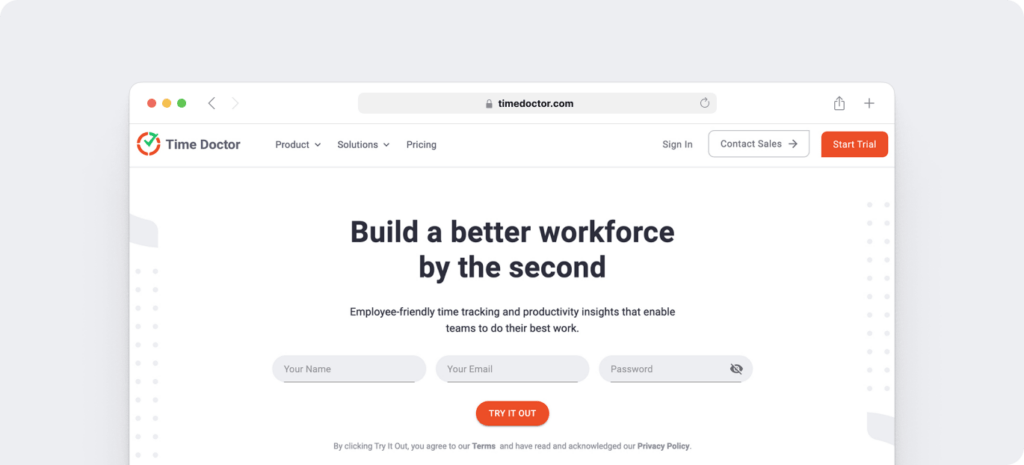Today, most businesses run the tried and tested standard workweek of 9 am to 5 pm, scheduled five days a week. And this usually results in a 40-hour workweek.
But over the years, many alternative work schedules have evolved to replace the traditional 8-hour workday.
One such popular alternative workweek schedule is the 9/80 work schedule.
In this article, we’ll discuss what a 9/80 work schedule is and how it works. We’ll also walk you through the advantages, disadvantages, and implementation of the 9/80 schedule so you can meet your business objectives.
This article contains:
(Use the links below and jump to a specific section)
- What Is A 9/80 Work Schedule?
- What Does A 9/80 Work Schedule Look Like?
- 5 Key Advantages Of A 9/80 Work Schedule
- 5 Disadvantages Of A 9/80 Work Schedule
- Will A 9/80 Work Schedule Work For Your Organization?
- How To Implement A 9/80 Work Schedule
Let’s get started.
What is a 9/80 schedule?
9/80 is a compressed work schedule involving long hours that rewards employees with two guaranteed workdays off every month.
It’s spread over a two week period – which comprises a total of eight nine-hour days, one eight-hour day, and one day off every second week.
In a 9/80 schedule, an employee works for 80 hours in 9 days than the conventional 80 hours in 10 days (in a five-day work week). This means your employee gets a Friday off every second week, leading to two extra work days off every month (or 26 three-day weekends per year!).
The benefit?
It’s proven to improve an employee’s productivity and the quality of their work.
In fact, Microsoft Japan offered 2,300 employees an opportunity to experiment with a flexible schedule. This project of adopting a four-day workweek boosted employee productivity by 40%.
What does a 9/80 work schedule look like?
Here’s how we can visualize the 9/80 work schedule:
1. First week
Monday: 9 hour work day(For example, 7 am – 12 pm and 1 pm – 5 pm with an unpaid one hour lunch break)
Tuesday: 9 hour work day
Wednesday: 9 hour work day
Thursday: 9 hour work day
Friday: 4 hour work day (first workweek hours end) + next 4 hours (second workweek hours begin)
Weekends: Off
2. Second week
Monday: 9 hour work day (with an unpaid one hour lunch break)
Tuesday: 9 hour work day
Wednesday: 9 hour work day
Thursday: 9 hour work day
Friday: Off
Weekends: Off
First workweek hours: 9 + 9 + 9 + 9 + 8 = 44
Second workweek hours: 9 + 9 + 9 + 9 = 36
Total work = 80 hours over 9 days
Although the overall working time in a month (40 hours a week) remains the same as a traditional work schedule, this condensed work system comes with many benefits.
You can also check out our free hourly schedule templates.
5 key advantages of a 9/80 work schedule
Here are a few advantages of adopting a 9/80 schedule:
1. Uninterrupted working hours
Given the nature of the schedule, an employee gets enough time to resolve personal commitments, resulting in fewer interruptions during work hours.
An extra hour of work each day increases the chances that an employee has in completing the tasks they started on the same day.
Since employees have better control of their work, this system can improve employee engagement at no additional cost.
2. Better work life balance
With two additional days off every month, an employee can recuperate from the busy work weekdays. This helps them manage stress better by striking a work-life balance.
An extra day off will give them long weekends to attend to their personal matters or go on vacations. This results in fewer sick leaves, time off requests, and no-shows!
3. Greater flexibility
A 9/80 work schedule doesn’t mean that the workplace will be closed every second Friday.
Instead, you can split the team into two. One group gets Friday off while the other gets Monday as their day off in the following week. It’ll ensure that your office continues to run five days a week without any hiccups.
Other measures to support flexibility include establishing core hours for work, rotating turns amongst employees, and staggering shifts.
4. Increased productivity
A 9/80 schedule gives an employee more control over their work schedule.
They feel more energized and motivated because of the extra day off at the end of two weeks. This increase in energy allows them to make significant progress in their respective roles and important breakthroughs on crucial tasks.
5. An incentive for attracting good talent
In the modern, fast-paced environment, recruiting good talent has become a challenge.
Potential recruits are always on the lookout for opportunities that give them the most fringe benefits, with policies that support remote work and a flexible work schedule or flex day.
A 9/80 schedule makes your organization attractive to new hires since it offers a work-life balance customized for their unique situation. A new employee will not have to wait to get promoted to get more control over their schedule.
5 disadvantages of the 9/80 schedule
Like a double-edged sword, this alternative schedule has both favorable and unfavorable consequences. Let’s take a look at the cons of the 9/80 schedule:
1. Leads to a longer workday
A 9-hour workday means shorter evenings.
Working a nine hour day can zap the energy of an employee since they might not get enough time to relax at home during workdays.
The long workweek could lead to fatigue and might lead to burnout. It can also affect employee morale negatively over time.
2. Increased overtime pay
Overtime is the money earned by an employee for working extra time than the usual number of hours in an employee’s workweek.
For example, if an employee works more than 40 hours in the first work week of the schedule, the employee must usually be paid 1.5 times their hourly pay as overtime hours.
A few hours of overtime is not a problem if they’re infrequent.
But if they’re more frequent and applicable for quite a few team members, then the business will be obligated to clear the daily overtime expense for the given pay period. This cost for the additional hour might cut into your bottom line.
3. Unavailability of clients
An organizational switch to a 9/80 schedule does not mean that all the external stakeholders will also follow suit.
This might lead to the unavailability of clients and other businesses (who follow an 8 hour day) during your extra hour at work. If your workforce isn’t occupied with tasks, it can lead to revenue loss.
4. Expensive day-offs
Incorporating an alternate work schedule like the 9/80 schedule will mean restructuring your leave policies.
If an employee who now works for nine hours a day opts for sick leave or a day off, the company will lose nine hours of work instead of the previous eight. Additionally, you will have to reorganize and implement a new system to eliminate losses concerning time, productivity, and money.
5. Staffing gaps for small businesses
A 9/80 schedule is not ideal for smaller businesses that have limited resources.
Even if you introduce the shift to ensure that your business remains open Monday through Friday, you may not have enough employees in each team to carry on with the day-to-day operations efficiently.
Will a 9/80 work schedule work for your organization?
To understand whether a 9/80 work schedule is ideal for your organization, you must closely examine your business goals and objectives.
This can be done by analyzing strategies that determine how the business will function across various verticals like marketing, finance, operations, HR (Human Resources), etc.
If your business involves interconnected or interdependent tasks, then a 9 /80 work schedule might not be a good idea.
For example, if you’re in manufacturing, it might affect productivity by creating bottlenecks due to the unavailability of even a single worker at the assembly line.
But if you’re in the IT industry or a similar knowledge-based business where an outcome depends only on individuals’ work, you can adopt this flexible work schedule.
So here are a few questions that you should consider before adopting a 9/80 schedule:
- What are the impacts of the current work schedule on our employee well-being?
- Will we be able to strike an effective balance between managing organizational needs and employee needs?
- Given the nature of our business, is it possible to align our work schedules with individual needs and desires?
- What will be the potential implications of adopting a 9/80 schedule?
If most of your answers are positive, you come to the most critical stage of adopting a 9/80 schedule: implementation.
How to implement a 9/80 work schedule
Here are five steps that you can follow to make a smooth transition to a more contemporary way of working:
1. Clarify what you hope to achieve to your workforce
Getting the entire team on board before you set sail is a no-brainer.
To successfully implement the 9/80 schedule at your organization, you can start by:
A. Making sure you have an exhaustive written policy in place
As a business owner, having a clear work policy is extremely important.
It’ll help you ensure that every employee understands the complete process, technicalities, do’s and don’ts to be followed while sticking to a compressed schedule.
B. Ensuring the right technological infrastructure is in place
Make sure you invest in the right tech and services to support this move. This can be achieved by using the right work tools that offer employee management solutions.
These tools help you set clear objectives, encourage collaboration, and help monitor the output through makers like productivity, time tracking, etc.
Want to increase the productivity of your employees?
Check out this list of Top 7 Employee productivity tracking software.
C. Training and communicating proactively
When implementing an organizational-level change, it’s essential to conduct proper training sessions and set the right communication guidelines.
The training should encompass all the rules and processes and leave no room for ambiguity.
You can use shared technology infrastructure to boost effective communication and networking. Moreover, you should collect regular employee feedback and address their concerns to help shape a positive company culture.
2. Consider how this change might affect your clients
Productivity and client services are the two most impacted areas when you adopt a 9/80 schedule.
Deciding if you can shut your business operations for the fifth day depends largely on the nature of your business, industry trends, and commitments made to clients.
This question needs to be addressed head-on as it’ll have far-reaching effects on your business’ success. It’ll also determine whether a 9/80 schedule is a sustainable option.
3. Check the legal compliances of adopting a 9/80 schedule
When an employer moves to a 9/80 work schedule, it becomes a prerequisite to notify and change their workweek schedule under the local jurisdiction.
Employers that want to switch to a 9/80 work schedule must establish a designated workweek and work protocol that complies with the federal and state overtime pay laws – especially the FLSA (Fair Labor Standards Act.)
4. Learn to manage payroll for a 9/80 schedule
For ease of calculation, you should begin tracking work hours in two-week periods similar to the 9/80 compressed workweek schedule.
Pay for a typical work week of 40 hours (eight hours a day) runs from Monday to Sunday.
If your employee gets paid by the hour or happens to be a non-exempt employee who works more than 40 hours a week, you have to pay them for the extra hour they put in.
For exempt employees, the law does not require overtime pay because there is no limitation on the number of hours worked in a workweek.
Fortunately, a tool like Time Doctor can help you manage your employee schedules and payroll with ease.
What’s Time Doctor?

Time Doctor is a powerful time tracking and performance management tool used by small businesses like Firehouse Subs and larger organizations to track work hours and productivity.
With Time Doctor, managers can create custom work schedules for their employees so that they know when to check in and out. You can even see how much time employees spend on their tasks and projects.
Time Doctor also offers a powerful payroll feature to streamline your payroll management – be it a traditional or a 9/80 work schedule. You can pay for all the employees’ work directly through its Paypal, Wise, or Gusto integrations.
5. Go for a trial run
The final step in the 9/80 schedule implementation is a trial. A trial allows sufficient time for employees and managers to practice the new arrangement.
It’ll provide the management with an opportunity to evaluate the impact of the 9/80 work schedule on productivity.
It may help eliminate any uncertainty you have regarding the feasibility of this schedule. That’ll give you the confidence to make an informed decision based on real-time metrics.
Wrapping up
Adopting a different type of schedule like the compressed workweek arrangement can be a challenging task.
But change also brings new opportunities.
As with anything, planning well and active preparation will help you reap the benefits that a 9/80 work schedule offers including, employee satisfaction and enhanced productivity.
With the right policies and supporting infrastructure in place, both the employee and employer can make the best use of a compressed workweek schedule.

Liam Martin is a serial entrepreneur, co-founder of Time Doctor, Staff.com, and the Running Remote Conference, and author of the Wall Street Journal bestseller, “Running Remote.” He advocates for remote work and helps businesses optimize their remote teams.


